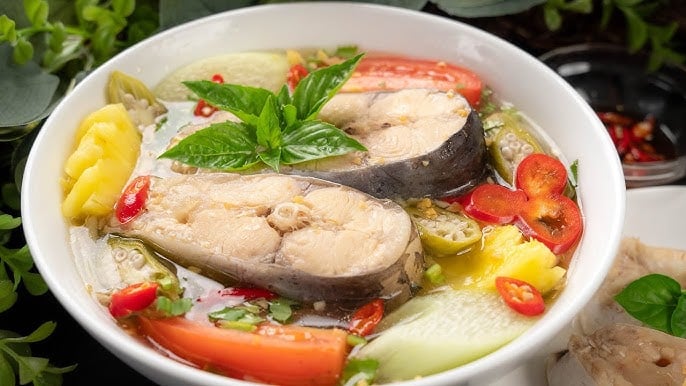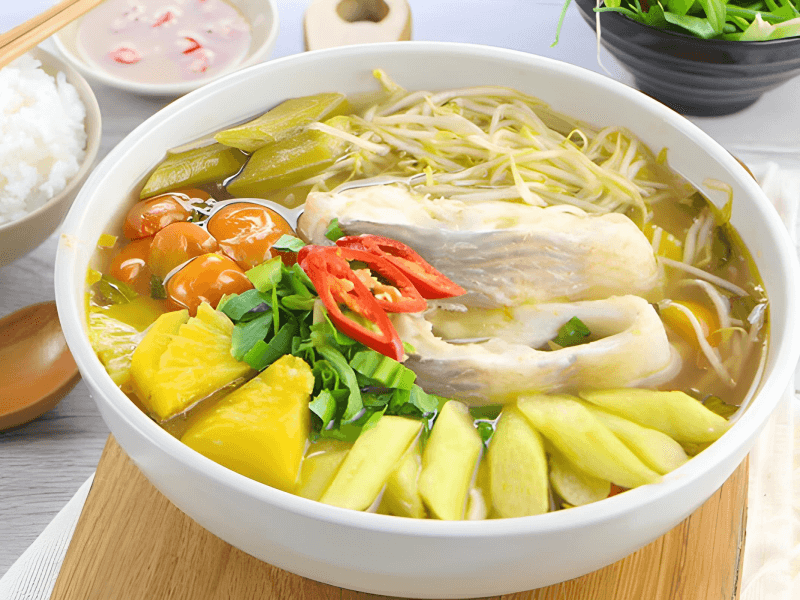Principle 1: Thoroughly Rinse the Fish to Remove Blood Before Cooking
One of the essential principles when cooking fish is to clean it thoroughly, paying extra attention to removing any blood, especially from the dark veins inside the belly. Fish blood is the primary reason why your broth may turn cloudy, dark, and smelly. Thus, to ensure a clear broth and eliminate the fishy odor, make sure to give the fish a good rinse, focusing on the bloody areas.
You can soak the fish in a basin of water for about 10-15 minutes to allow the blood to wash away and neutralize in the water, making it easier to clean. Pay close attention to the gills and belly, as these areas tend to retain more blood. After rinsing, use some salt or lemon to scrub the entire surface of the fish. This additional step will help neutralize the fishy smell effectively.

Tips for Cooking Delicious and Odor-Free Fish Soup
After rinsing the fish, let it air dry to reduce moisture before marinating. Then, season the fish with salt, MSG, sliced shallots, and pepper. Mix well and let the flavors absorb for at least 15 minutes before cooking.
When it’s time to cook, use chopsticks to carefully pick up the fish pieces and place them in a frying pan or a pot of boiling broth. Do not, under any circumstances, use the marinade or the liquid released by the fish during the marinating process in your cooking. The liquid contains blood, mucus, and a strong fishy odor, which is challenging to eliminate. Additionally, it will make your broth cloudy and unappetizing. It’s best to discard this liquid to ensure the flavor and aesthetics of your dish.

How to Cook Delicious Sour Fish Soup
Principle 3: Use Boiling Water Instead of Cold Water
One trick to cooking tasty, odor-free fish is to use boiling water. Simply boil some water and then add the fish. The sudden heat will cause the fish meat to contract, preventing blood and mucus from seeping out from the belly and skin, thus eliminating any fishy odor.
Using boiling water is particularly effective for dishes like sour soup or banana flower soup, which require a significant amount of water. For dishes that don’t need much water initially, such as stewed or pickled fish, you can add the fish directly with the other ingredients. However, when it’s time to add water, make sure to use boiling water to enhance the flavor and prevent any fishy smell.
“The Secret to Golden, Crispy Fried Wings”
Recently, a new trend has taken the culinary world by storm, especially among food enthusiasts and home cooks. Instead of using the traditional method of coloring and sweetening dishes with refined sugar, a secret ingredient is being whispered among the culinary community – a mysterious fruit that transforms dishes into a masterpiece of flavor and aesthetics. With its natural sweetness and vibrant hues, this fruit elevates the taste and appearance of meat and fish dishes to new heights, taking your culinary creations to the level of a gourmet chef.



































